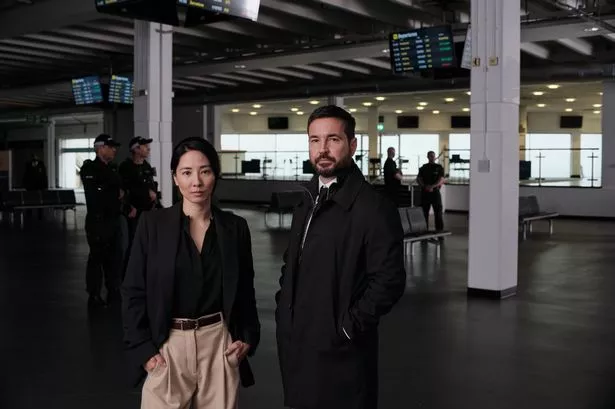The wait is almost over as the second series of ITV’s Red Eye is set to begin very soon.
There’s good news for fans of the thrilling drama Red Eye as another season is fast approaching.
Last year, ITV viewers were on the edge of their seats as they watched Richard Armitage take on the role of Dr Matthew Nolan, who was being escorted back to Beijing by DC Hana Li (Jing Lusi) for a crime he didn’t commit.
However, their journey wasn’t smooth sailing as Hana found herself embroiled in an escalating conspiracy, along with a growing number of murders.
As the show came to a dramatic end, fans were eager to see the series return, which ITV announced back in May this year.
Although Richard Armitage won’t be back in action, Red Eye is welcoming another well-known face to the explosive thriller, Line of Duty star Martin Compston.
Martin said of joining the show: “I had a blast making it! I had big shoes to fill, literally with the size of Richard! He did such a wonderful job, leading with Jing in the first series.
“It’s great to come onto a job when you know there’s nice pressure on it because the first season was such a success, so well done, so well received.
“Your job is to help take it to the next level. It was a lovely pressure to have and a lovely returning team; the crew were all brilliant. It was great, we had a lot of fun.
Speaking about the series, Martin teased that it gets ‘more outlandish’ and ‘more wild’ as the episodes progress, although he was tight-lipped on what people can expect to see.
Praising his co-stars, the actor added: “People want to be entertained, it was great fun and getting to work with Jing, she’s so proud of the show and so committed to it.
“She’s really protective of it and she’s surrounded by a wonderful cast, Jem (Jemma Moore) and all these actors.
“She won’t thank me for saying it but Lesley (Sharp) is British acting royalty. So getting to share some screen time with her was really appealing.”
Also joining Martin on the second series of Red Eye will be Isaura Barbe-Brown, Nicholas Rowe, Danusia Samal, Trevor White and Guy Williams.
Speaking about the show’s return, Jing commented: “I’m incredibly excited to return to the world of Red Eye, and thrilled to be sharing this rollercoaster with the brilliant Martin Compston.”
It’s not yet known when the second series will air on ITV.

